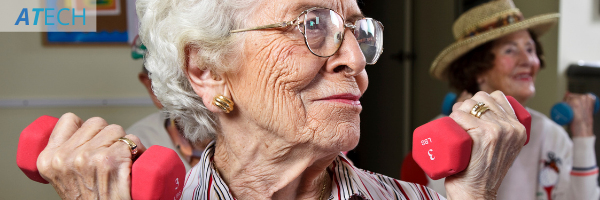A new study conducted by researchers at the University of California San Francisco has determined that approximately 42% of the population aged 65 years or older who had need of simple assistive technology devices to aid in toileting and bathing did not have these needs met. Extrapolating these numbers, the researchers determined that up to 5 million individuals are impacted by this unmet need.
The study’s author Kenneth Lam, MD, of the UCSF Division of Geriatrics, commented to the University of California that these simple home-modification devices each cost about $50 but the cost is not covered by Medicare. “Yet these low-tech interventions meaningfully reduce injury, enable independence, preserve dignity and improve quality of life in older people suffering from irreversible disability for complex multifactorial reasons.”
The study found that self-image may be a factor in the adoption of these simple technologies.
“Many people find equipment stigmatizing,” says Lam. “Aesthetics are unappealing, and some may fear being perceived as old and vulnerable; older adults describe equipment as meant for ‘someone older,’ but not for themselves. This may explain why younger individuals were more likely to have unmet needs and why those who already owned a walker were the least likely, since they had already overcome stigma around assisted device use.”
The researchers also found that nonwhites were more likely to lack the equipment that they need for simple tasks like walking, toileting and bathing. The study found that 38 percent of whites had an unmet need, compared with 55 percent of other races. The study’s authors note that this finding could be due to disparities in access, or may be attributable to minority populations providing more caregiving in lieu of using assistive equipment.
The study also found differences in the adoption of technology based on the age of those in the study. Younger age was found to be associated with not having the equipment participants needed: Among those ages 65 to 74, half had an unmet need, versus 29 percent for those who were 85 or older. Participants in study who already had a walker when the study began were more likely to be better equipped than those who did not.
Furthermore, the research indicated that within the elderly population, the use of low-cost and beneficial assistive devices like grab-bars, shower seats and raised toilet seats to prevent injury, promote independence, and improve quality of life are being underused.
These basic self-care assistive technology devices may enable individuals to live at home longer, postponing the need to move into more expensive, less independent residential care. The study data suggest that better clinical assessment and better provision of assistive technology devices are needed. The full report may be found in the March 2021 issue of the JAMA Internal Medicine
For more timely articles on Assistive Technology, visit our News & Events page.

